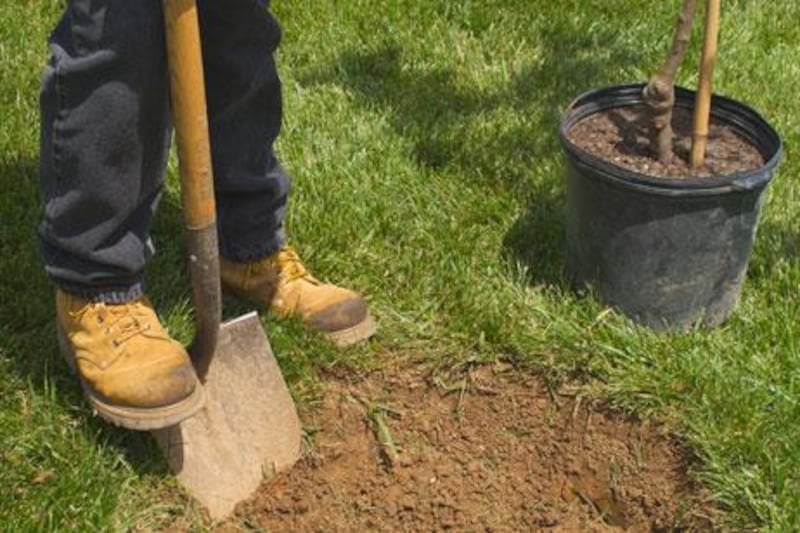Planting trees - even in a country as parched as the UAE - can make an important contribution to sustainable development by helping to soak up CO2, improve air quality, combat desertification and stabilise soils. It also provides food and habitat for other plant and animal species.
Planting trees in cities can help combat the Urban Heat Island Effect, through which hot roofs and roads, baked by the sun, warm the air blowing over them. This results in discomfort, increased energy use and air conditioning bills, and the accelerated formation of smog.
With the exception of a few reptiles, trees are the only living organisms with lifespans greater than humans. For Doctor Dennis Garrity, the director general of the World Agroforestry Centre, this makes them "unique intergenerational gifts to pass on to our descendants".
Despite the many positives associated with planting trees, it is essential to plant the right tree in the right place in the right way. A 2010 report for the City of Toronto found that a tree with a trunk 75 centimetres in diameter intercepts 10 times more air pollution and stores up to 90 times more carbon than a tree with a trunk measuring 15cm.
Poor tree selection can introduce potentially invasive species or lead to blocked drains, buckled pavements or densely shaded areas where nothing else will grow. As always with plants, it is vital to do your homework. Whichever species you select should ultimately be determined by the amount of space available, whether the tree will be grown in a container or in the ground, and the amount of light, shade and water it will receive. Other environmental factors likely to affect the plant's growth include the proximity of walls or buildings, reflected heat, strong winds, soil salinity and salt-laden ocean spray.
For coastal gardens, the sea grape (Coccoloba uvifera) and the beach hibiscus (Hibiscus tiliaceus) are both excellent choices. Hibiscus tiliaceushas bright yellow flowers with a deep red centre. Over the course of the day, they deepen to orange and finally red before they fall. The branches of the tree often curve over in time.
Coccoloba uvifera can be used as a hedge, windbreak or even as a shady street tree. With its distinctive, jade-coloured, fan-shaped leaves, fragrant flowers and clusters of attractive fruit, it deserves to be used whenever the opportunity arises.
If choosing the most appropriate species is one of the most important first steps in planting a tree, ensuring its survival is even more important. Some of the best ways of doing this are to make sure that it's healthy when you buy it and to plant it correctly when you get it home. When you are inspecting a tree that's for sale, make sure the trunk is free from any wounds, bleeding areas, burns, galls, cankers or marks created by chafing girdling ties. The form or shape of the crown should be typical for a specimen of the selected species and should also be free from any damage or deformations that may have been caused by wind, pruning or pests.
Now that you have your tree, it's time to dig a planting pit of the right size, an enormous two metres wide by two metres long by two metres deep for palms, or one and a half cubic metres for trees. Any subsoil that is excavated as part of this process will need to be removed completely. Once digging has finished, the hole should be filled with irrigation water to ensure that the pit will drain freely after planting.
Now backfill, using 300-millimetre layers of topsoil, compost or a mixture of both that can be compacted with water. Place slow-release fertiliser tablets at a depth of 25 to 30 centimetres next to the planned location for your irrigation system's drip emitters. Overfill the pit by approximately 100mm to allow for settlement.
Before planting, drive tree stakes into your pit. At the time of planting, make a hole that is large enough to take your tree's root ball, and ensure that the tree's collar line (the line of contact between the soil and stem) is at the same level as the surrounding ground. Fill around the plant in 150mm layers, firming down each layer separately to eliminate any air pockets, until the desired soil level is reached.
Now form a circular watering basin slightly larger than the planting hole. Water the tree thoroughly during and after planting.
Use at least two pairs of rubber tree ties to attach your tree to the stakes. They should be pressure impregnated with non-toxic wood preservative and be buried at least one metre below ground.
Finally, mulch the surface of the tree pit to a depth of at least 50mm with a product such as chipped pine bark. This is readily available from garden centres and nurseries, and helps to retain moisture in the soil by reducing the amount of water that is lost through evaporation.
Congratulations. You have now planted your very own tree.
Ask Nick
Even though the weather is mild now, I am struggling to keep my hanging baskets sufficiently watered. What would you recommend to stop them drying out?
Caring for hanging baskets in any climate is a real challenge, but keeping them alive and thriving in the UAE can only be described as a labour of love and an act of will.
First, mix a water-retentive gel with your compost. This will help to hold more water in the plant's root zone, where it is needed most.
Second, place a plastic bin liner between the compost and the basket's fibre liner (you can trim it so it cannot be seen). Then puncture the plastic in several places to allow drainage and to prevent waterlogging.
Finally, avoid all peat or sphagnum-based products since these are collected from the wild and are not sustainable.





